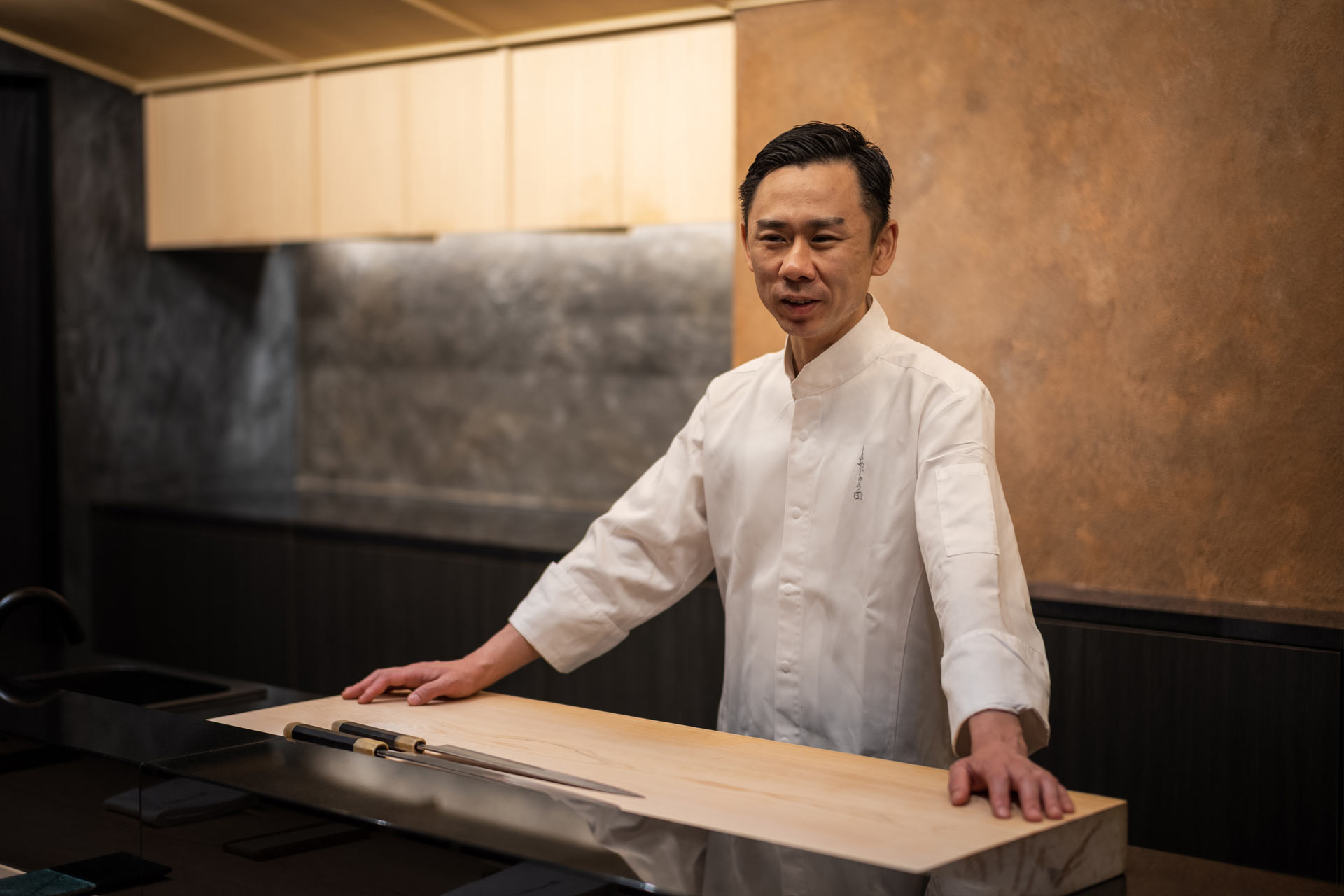
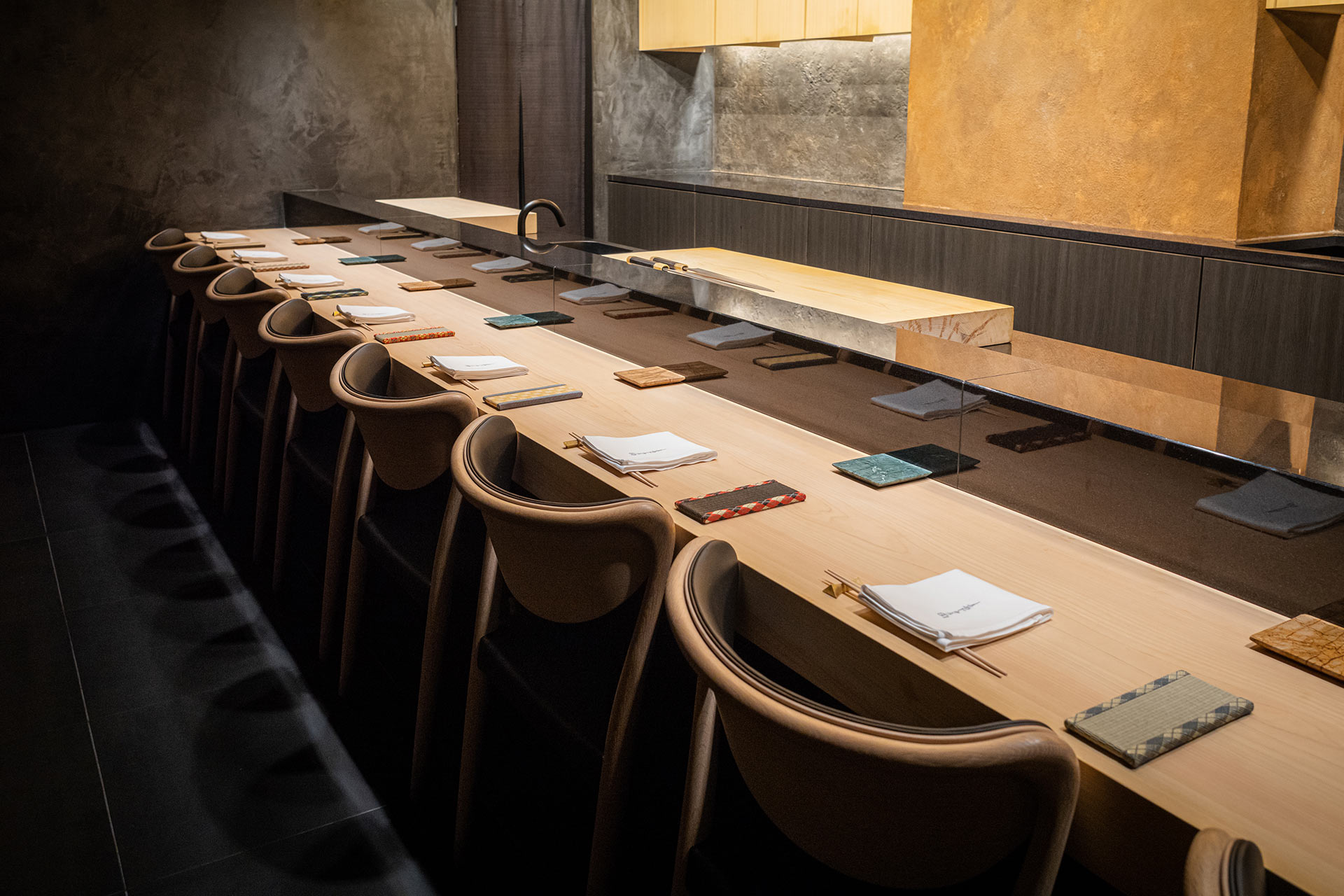
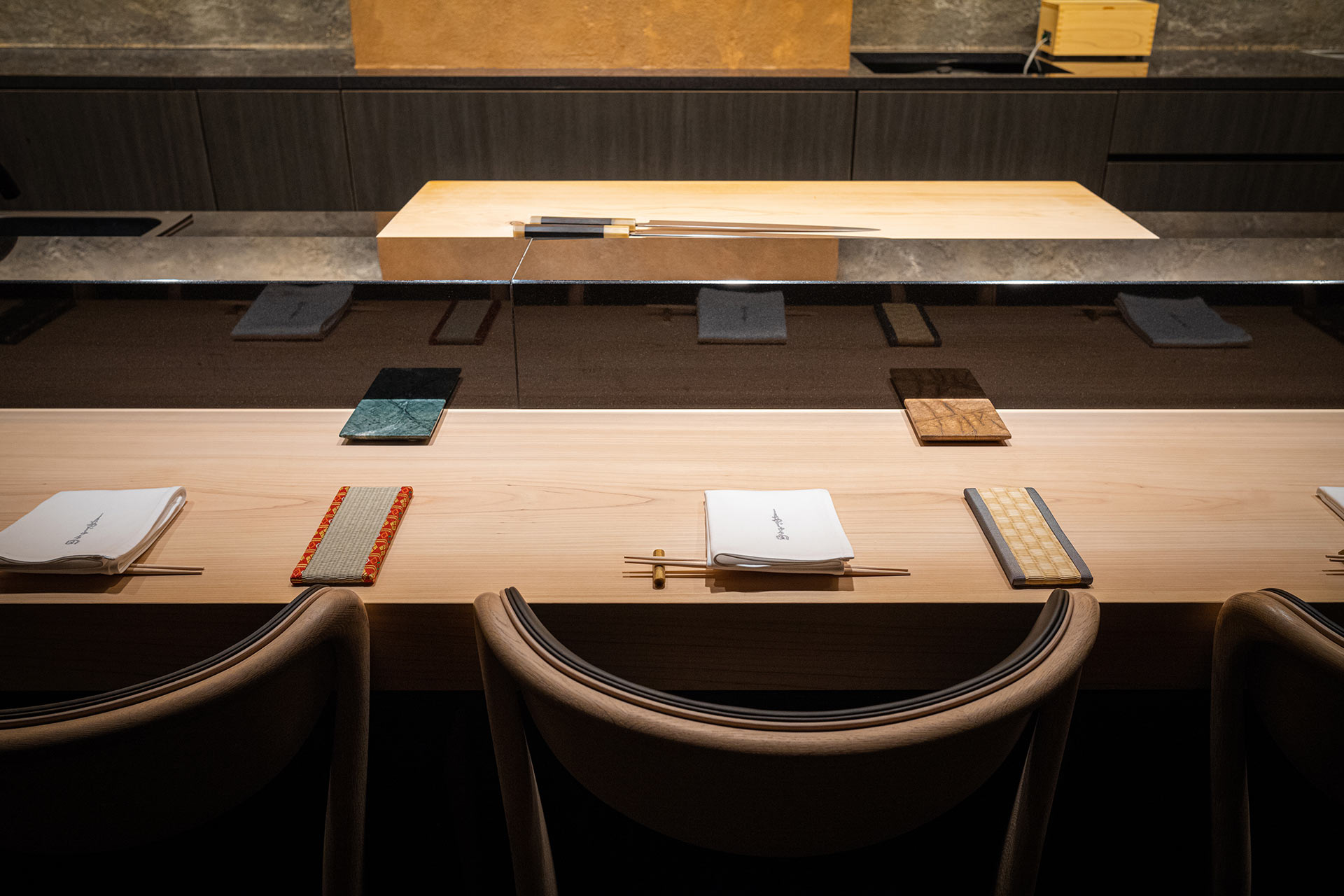
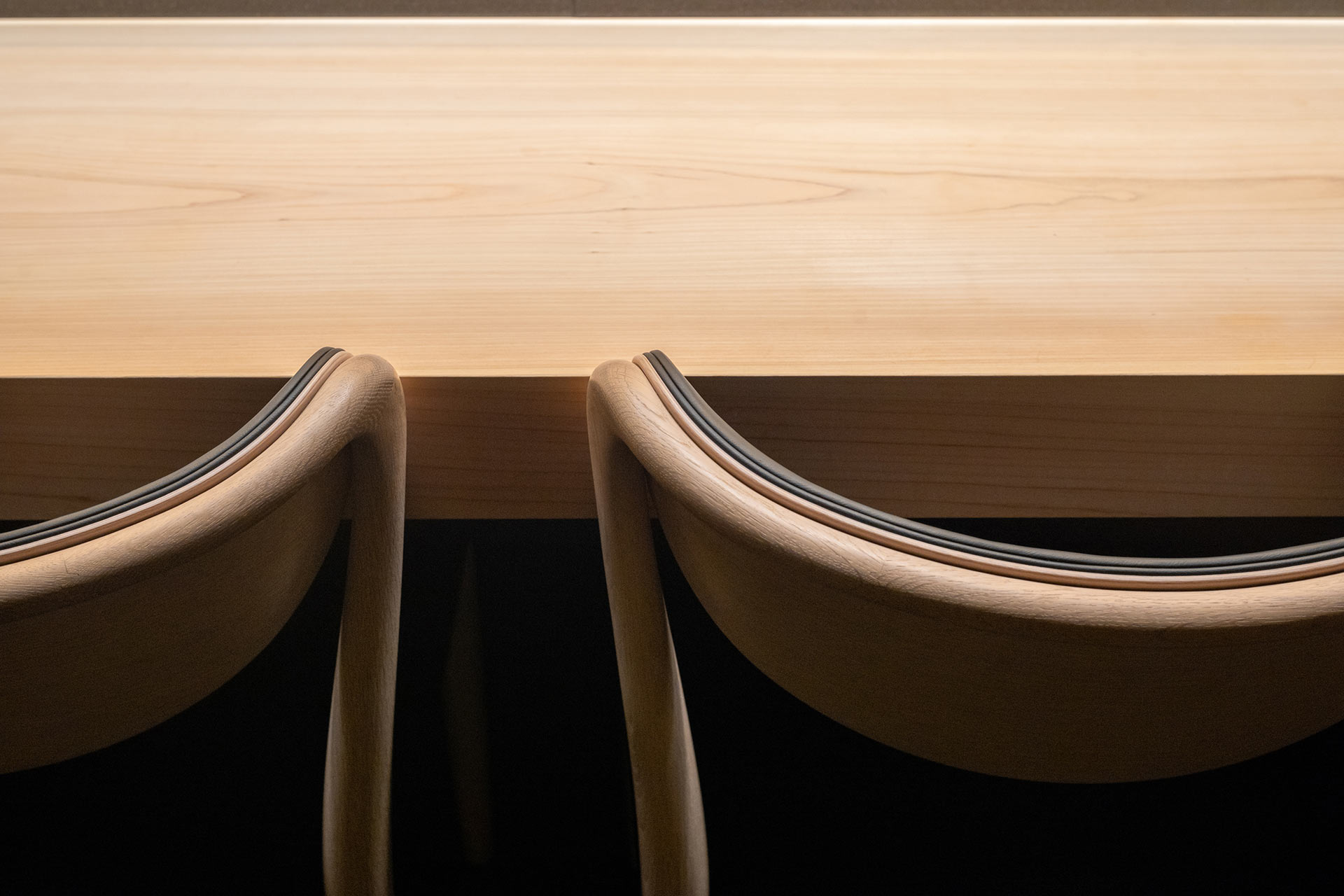
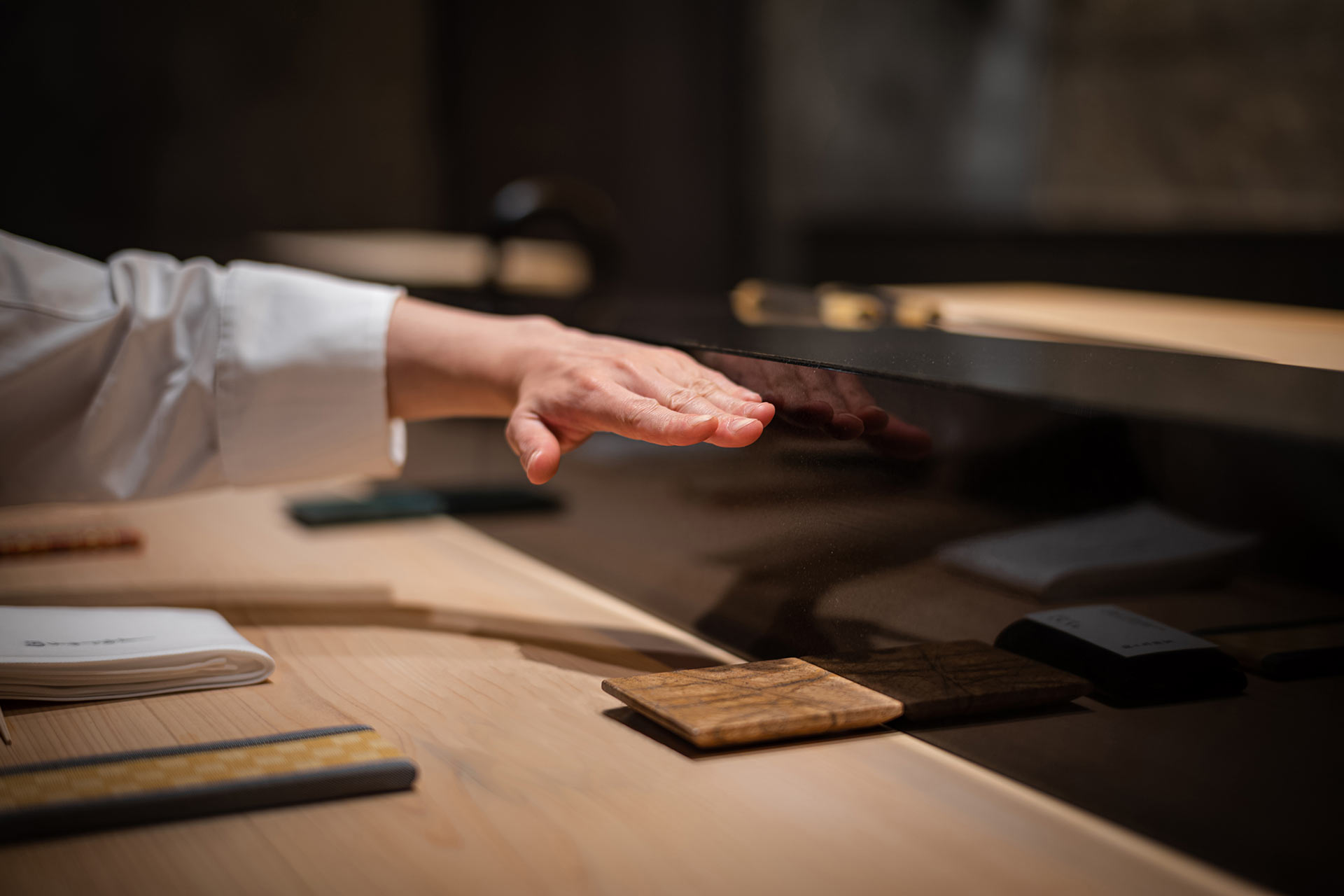
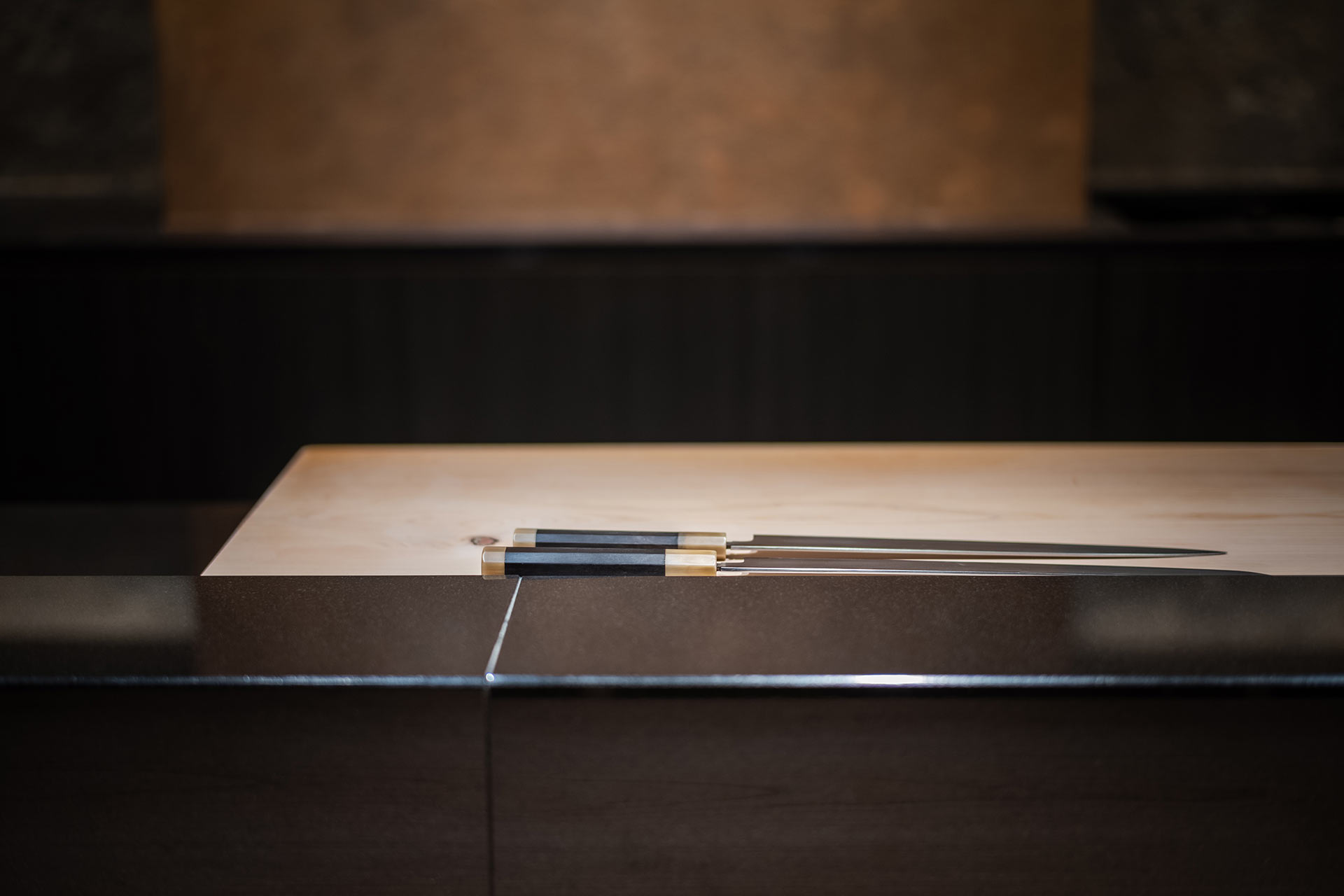
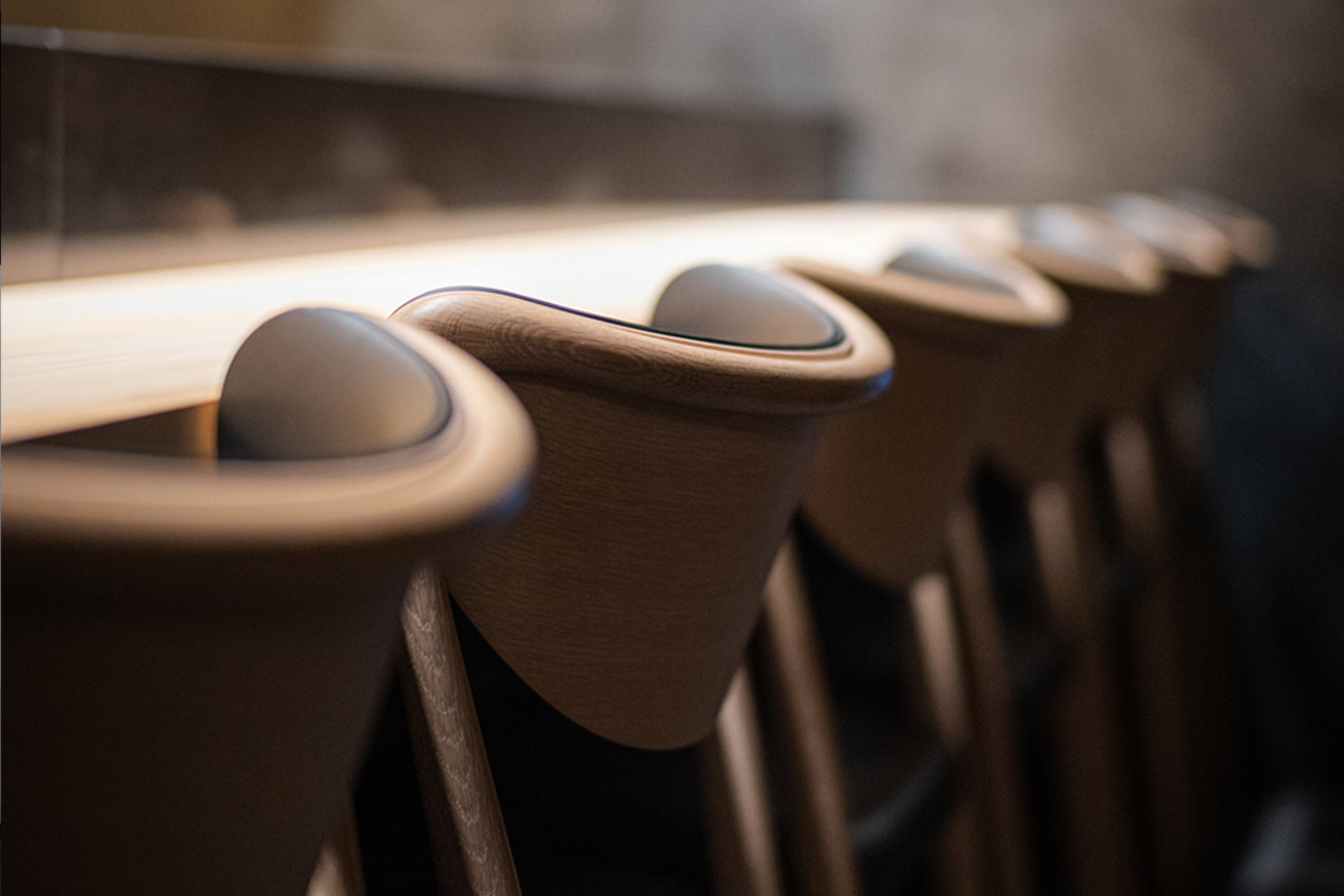
Hiroki Ajuta, owner of the restaurant in Tokyo by the same name, tells us about his passion for his job and the importance of the interior design choices he made in his establishment.
We are in the restaurant Ajuta, located in Udagawa-cho, a district in Tokyo which is part of “Okushibuya,” a particularly quiet and elegant neighborhood.
Drawn up to a counter table made from a single slab of hinoki cypress that extends through the refined space are MARCEL chairs by Ritzwell designed by Shinsaku Miyamoto. In an interior dominated by rigorous orthogonal lines, the Marcel chairs, with their curvy and enveloping backrests, imbue the environment with softness and evoke the sinuous pattern made by waves on a sandy beach.
Opened in April 2021, Ajuta is a popular restaurant where customers can enjoy the pairing of Edomae sushi with wine.
Hiroki Ajuta and his commitment to food and interior design.
While in culinary school, Ajuta took a solo trip to Europe, during which he had several enriching experiences. He worked in France, in a restaurant kitchen, for one month, and toured a mozzarella cheesemaking workshop at a dairy farm in Italy, among other places.
As a young man coming from Japan, who was unfamiliar with cuisine made with wild game at the time, he was bewildered by the custom of eating rabbit, pheasant, and even pigeon.
“I didn’t like the gaminess or the herbs, so I didn’t find it very appetizing to be honest”, as Hiroki Ajuta recalls. “Today, however, I do enjoy it”.
After returning to Japan, he started working at a traditional Japanese restaurant for four years. Ajuta later trained at several sushi restaurants ranging from high-end restaurants to more humble establishments. During this time, he became increasingly convinced that repetition is the key to learning about sushi and preparing fish-based dishes.
“High-end restaurants don’t serve so many varieties of sushi, and if the proprietor does the preparation, you don’t often get a turn, so I also trained at ordinary sushi restaurants. If you work diligently and in a personal way, it will always be good training.”
With time, Ajuta acquired the palate and skills of a sushi artisan, even going so far as to spend 12 hours making a day trip to Sapporo to try a sushi restaurant if he heard it was good and analyzing the flavor of popular sushi restaurants and trying to guess how long the fish had been wrapped in kombu.
“I approach it without any preconceptions, and don’t hesitate to apply French culinary techniques to sushi, but at the end of the day, I consider myself more of a sushi artisan than a chef. I just want to keep on dealing with fish forever. I’ve met a lot of people I respect who have been in the business longer than me, and each of them has their own skills they have cultivated and something like a philosophy. I draw on them for ideas, but never imitate them. If I imitate someone in any way, I will end up relying on it, and then it isn't my sushi anymore.”
This is a rather profound thought, which doesn’t apply only to sushi, but seems to apply to manufacturing as a whole.
How to pair sushi with wine.
“Although these days we find more and more modern sakes, I don’t feel that they have much synergy with sushi. They simply aren’t exciting enough in the taste. I thought that maybe it would be interesting to pair sushi with wine the way that sauces accompany the dishes in French cooking, for example. Wine goes surprisingly well with classic sushi ingredients, such as a Pinot Noir combined with mackerel.”
“As a matter of fact, I change the type of rice and the proportion of vinegar to suit the wine. In short, I change the sushi to suit the wine. Our salt doesn’t have much minerality, so for seasoning, I use European rock salt and the like. You want a fresh sweetness for the sake rice, so I use freshly cooked rice. Generally, the conventional wisdom in sushi is to use rice cooked some time in advance. I also prepare the sushi rice in a bowl instead of a wooden tube and use an electric rice cooker rather than a gas one to make sure the amount of vinegar that evaporates remains consistent. Not only that, but I also prepare it five portions at a time. This also might stray from the conventional wisdom, but I want to eliminate as many variables as possible. If the sushi rice is inconsistent, it’s meaningless.”
Ajuta seems to be a sushi scientist. In fact, he’s so exacting that he even adjusts the temperature of the sushi rice based on the ingredients. He fine tunes everything depending on the amount of fat in the fish and the time needed for the preparation.
“Generally, I don’t pick the wine simply based on the label or the price. I always check the flavor before choosing a bottle. My sushi goes well with New World wines in particular, so I think the value is good for the cost. I select wines that will make the best pairing together with the sommelier.”
Ajuta values a relaxing experience for customers above all else, and the interior design of the restaurant is a key point.
“My restaurant makes sushi, but in a broader sense, it is a restaurant that serves delicious food.” For this reason, the concept was a little different from the typical sushi restaurant. The architectural designer I commissioned had worked on Italian and Chinese restaurants but wanted to tackle the challenge of working with a new type of establishment. So I left almost everything, except the counter and the chairs, up to them. People probably imagine square chairs at sushi restaurants, but the customers aren’t facing straight ahead eating sushi the whole time. I also want customers to entertain clients or have dates. For that reason, I chose the MARCEL chairs by Ritzwell. I want the dates and the entertainment to succeed as well”.
Indeed, with the MARCEL, customers can relax while talking with the person next to them. That’s because the chair was created from that design concept in the first place. It is a perfect match for modern public spaces, whether Japanese or Western, as well as for private residences where everyday life unfolds.
“I became a sushi artisan because I admired the beauty of making sushi, and I feel like MARCEL resonates with that in some way. In particular, the beautiful curved line that flows from the back legs through the backrest is three-dimensional, but there is no excess. It’s similar to the mindset in making sushi. I want customers to relax and enjoy a meal in a beautiful space. And nothing would make me happier than for them to look across the counter from time to time and think it’s beautiful to watch me work”.
“Some sushi restaurants are designed with a low counter to create a sense of closeness to the proprietor, but in my restaurant, I made it a little higher (16cm) because I want to preserve private space for the customers”.
Future goals.
“My goal is to make Shibuya the promised land for sushi, so that they are synonymous with each other. I’d also love to receive even a single star. That said, getting a star isn’t something I’m striving for in particular and nothing makes me happier than seeing that the work I have devoted myself to is recognized by my customers”.
Photocredit by Tonari_no_koho